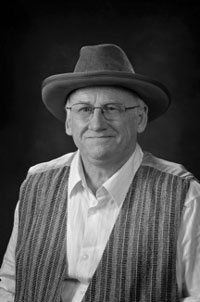
But the Robertson Co. Co-op was slower in bringing electricity to my Lincecum grandparents’ farm in Bald Prairie, so I saw the feeble light that came from kerosene lamps. Trying to read a book by lamplight would have strained my eyes. Having to depend on candles or fireplace light to read discouraged reading at night.
Although Thomas Edison held more than a thousand patents, it was the electric light which earned him the nickname “the Wizard of Menlo Park.”
He said, “We will make electricity so cheap that only the rich will burn candles.”
A 75-watt bulb burns brighter than 100 candles, and many of us grew up in homes with a single bulb suspended from the ceiling by braided electric wire.
Nowadays most of us live in light-saturated areas, according to Paul Bogard, whose book The End of Night I am reading. His point is that two-thirds of the world’s population (including 99 percent of people living in the continental US and western Europe) no longer experience a truly dark night, one untouched by artificial electric light. Just ask any amateur astronomer how hard it is to find a location that is truly dark.
Four hundred years ago, everyone in Italy could see the multitude of stars that filled the skies overhead, but only Galileo had a telescope to study them. In the 21st century telescopes are commonplace but few of us can find enough darkness to let us to see more than the brightest stars.
To quote from Bogard’s book, “The brightest light on planet Earth shoots from the apex of the Luxor casino in Las Vegas, made up of 39 blended xenon lamps, each one six feet tall and three feet wide. It’s the greatest number of lamps they could fit into the space.”
The endless pursuit of artificial brilliance has made the Vegas Strip the brightest real estate on earth, as confirmed by NASA photographs from outer space. Las Vegas is famous for the slogan, “What happens here, stays here,” but that doesn’t apply to the concept of saturation lighting. It reigns all over this country.
Even a small city like Sherman, where I live, expends far more kilowatts than are really needed to have brilliant lighting on acres of auto dealerships, gas stations, and parking lots. Bogard’s book has maps that show the increase in artificial night sky brightness in the US from the late 1950s to the mid 70s and then 1997. The most stunning map of all shows how much light pollution we’ll have in 2025, if the present trend continues.
Today the electricity required for lighting systems is measured in mega- and gigawatts, We’ve come a long way from those rooms with a single 75-watt light bulb hanging from the ceiling. I think we have too much of a good thing.
Jerry Lincecum is a retired English professor who now teaches classes for older adults who want to write their life stories. He welcomes your reminiscences on any subject. Email him at jlincecum@me.com.